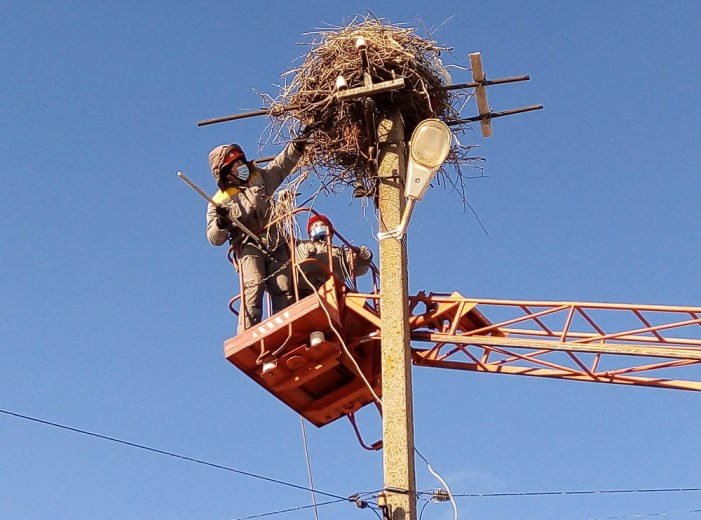DTEK Donetsk Grids saved around 70 white storks in Ukraine over the last year
In 2020, DTEK Donetsk Grids installed 7 artificial nesting platforms for storks on the poles of distribution power lines. These platforms protect white stork nests from destruction and the birds from electrocution. Thanks to this initiative, the company saved about 70 birds, listed in the Berne Convention for the Conservation of Wild Flora and Fauna and Natural Habitats in Europe*, in the past year alone.

“Conservation of biodiversity is one of our key focus areas, which is in line with the DTEK 2030 strategy based on ESG principles, values and business responsibility for progress in achieving the sustainable development goals set by the UN Global Compact. Since 2015, we have installed 15 metal nesting platforms for storks. Almost half of this amount was installed last year,” says Oleksii Degtiarev, DTEK Donetsk Grids CEO.
According to ecologists, such an initiative taken by DTEK Donetsk Grids has saved about 200 white storks over 5 years, 120 of which are chicks.
Special design not only safeguards rare and endangered birds from death, but also secures the grid infrastructure. The platform is a durable basket made of metal rods. It lifts the nest above the power line to a height of over a meter and can support the weight of both nests and birds. Thus, heavy nests, which sometimes weigh up to 300 kg, do not slide onto the wires. Birds are protected from electrocution, and lines are protected from short circuits and emergency shutdowns.
In addition to the nesting platforms for storks, DTEK Donetsk Grids installs bird protection devices on power lines, i.e. special casings made of insulating material that cover the side wire sections. By the end of 2021, there will be 1,590 pieces of bird protection devices, including those installed within the territory of the Meotida National Natural Park in Pryazovia. Also, the power company plans to install 365 diverters that glow after sunset. Being attached to overhead power lines, the diverters make the lines visible to birds in flight from up to 15 meters away.

